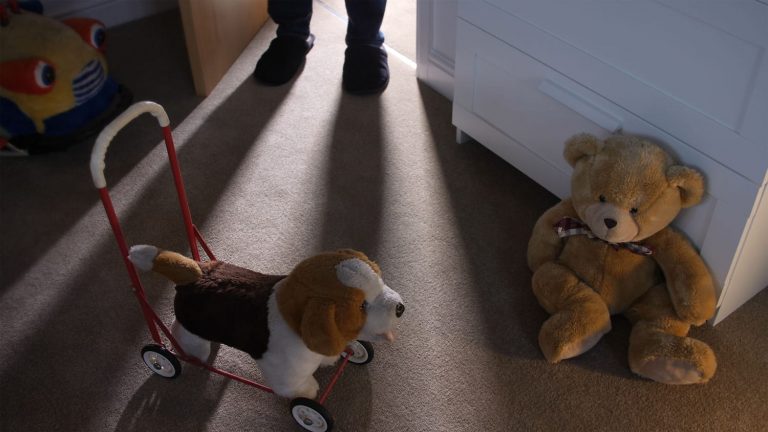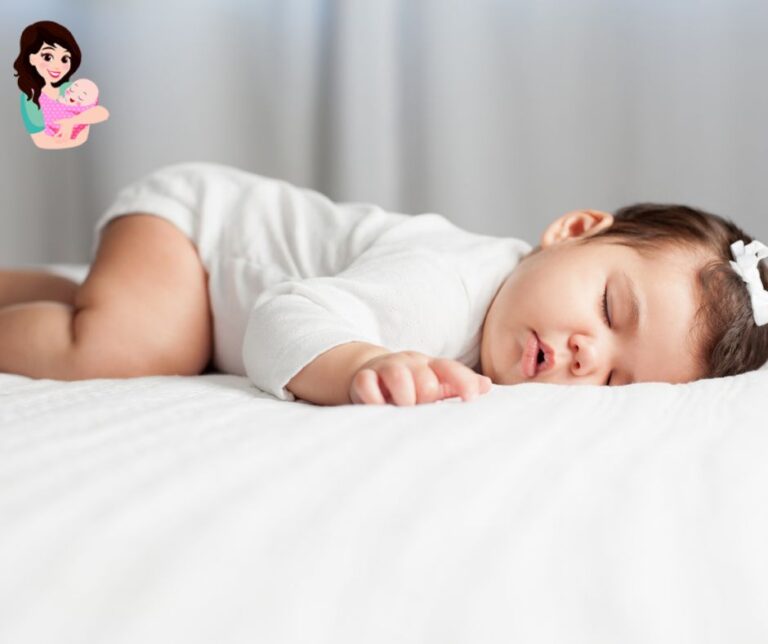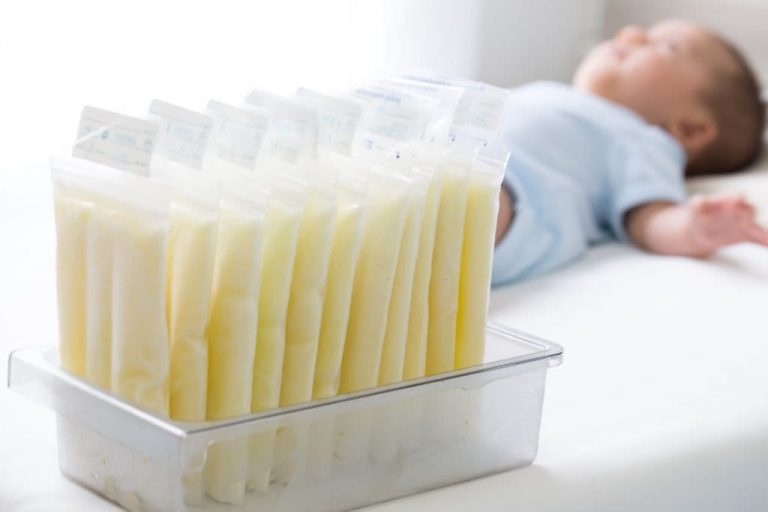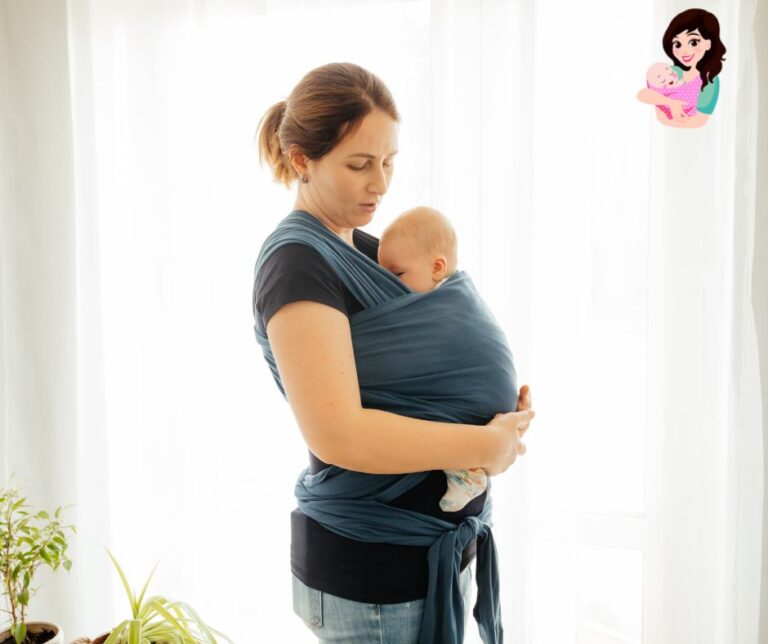
It’s normal for parents to be anxious about when to let their child have a pillow. Sometimes, parents choose to use an object or pillow that is too big.
As a result, the toddler may feel uncomfortable while sleeping with it. And that’s why we need to answer the question in this article. So, at what age can a baby sleep with a pillow?
A baby can sleep with a pillow at 24 months. At this point, it is recommended that you introduce the child to a pillow because it will help them sleep better and it will also help them develop their body properly.
This means that they will have better head and neck control and proper spine alignment, which will prevent any back problems later in life.
What Happens When Introduced Too Early?

Pillows can be dangerous for babies, especially when they’re introduced too early. Here are what happens when you introduce a pillow to your child too early:
1. Choking hazard
Babies that cannot move their heads on their own are at risk of suffocation if they accidentally pull a pillow over their faces. This is especially true if the baby has allergies and is using a pillow stuffed with feathers or other materials that can cause an allergic reaction.
2. Injury risk
If a pillow is introduced too early, there is a risk of suffocation due to thin airway tissue and immature neck muscles. Babies can roll over onto their tummies while sleeping on their backs because they don’t have control over their heads yet.
This makes them more prone to SIDS (Sudden Infant Death Syndrome) since they aren’t able to lift their heads for excess saliva or mucus from going down into their lungs (which could cause pneumonia).
Plus, if a pillow is introduced too early, it can interfere with the healthy development of the spine as well as cause flat head syndrome.
3. Discomfort
You might notice that your baby doesn’t seem comfortable when she’s lying down on her back with her head resting on something soft like a pillow or blanket.
This is because babies aren’t used to having anything underneath them yet, so it makes it difficult for them to breathe properly. If your newborn is having trouble breathing while lying down flat on his back, try using rolled-up towels instead of pillows until he gets used to it.
4. Teething pain
Babies need relief from teething pain. Teething takes time and patience (for both parents and babies).
If your little one is not getting enough relief from teething or other symptoms such as congestion or diarrhea, then introducing a pillow earlier than recommended could be harmful to them because it will only prolong their discomfort.
Tips for Using a Pillow With a Baby
The use of a pillow for nursing is an essential part of the process. However, not all pillows are created equal, and it can be difficult to determine which one will best fit your needs. Here are some tips for using a pillow with a baby:
1. Choose Your Pillow Carefully
Choosing the right pillow can be tricky, and there are many factors to consider before making your final decision. The first thing you need to do is look at the size of your baby’s head compared to its body size.
If they have tiny heads and large bodies, they might need more than one pillow to get comfortable. If they have larger heads and smaller bodies, they will probably only require one pillow.
2. Consider Your Child’s Age
Another factor you should consider when choosing a nursing pillow is how old your child is.
For example, if you’re looking into buying an infant nursing pillow, then you should know that these types of pillows aren’t designed for older children or adults. Most infant nursing pillows aren’t designed for use until around twenty-four months after birth.
3. Consider the material
Another thing that you need to consider is the material that the pillow is made up of. If it is made up of foam, then it will help keep your baby’s head and neck warm during sleep.
4. Keep the environment safe
At the same time, you should also make sure that there are no sharp edges or corners on the pillow, as these may cause injury to your baby’s skin when he or she sleeps on them.
To avoid this problem, make sure that your pillow has rounded corners and edges so as not to hurt your child’s skin while sleeping on them.
How to Use a Pillow With a Baby
Place the pillow under the sheet, then put your baby on top of it. This allows you to adjust how much of their body is covered by the pillow. If they have trouble rolling over, you can use two pillows to keep them from rolling off one side of their bed.
You must keep track of how much time your child spends on her back, side, and stomach during sleep time. This will help prevent flat head syndrome (when infants spend too much time lying on one side).
Benefits of Using a Pillow for a Baby
Using pillows with infants provides many benefits:
1. Keeps baby comfortable
A pillow gives your baby something soft to rest against when sleeping on his back or tummy. This helps reduce pressure on his chest and abdomen, which may make him feel better if he has gas or colic pain. A pillow is one of the most important things that you need to buy for your child when they are of age.
A good quality pillow can offer your child a lot of comfort during their sleep. It will help them get better sleep, giving them more energy during the daytime so that they can play with their friends and enjoy their childhood days without any worries or problems.
2. Helps maintain proper posture
A large, thin foam wedge placed under the arm can help keep your baby’s arms at his sides while sleeping on his tummy; this helps keep him from accidentally rolling over onto his back during sleep (prone position).
A small bolster placed under the lower half of his body encourages him to keep his legs straight while sleeping on his side (side position).
3. Helps prevent ear infections
A lot of babies suffer from ear infections due to their posture while sleeping on their backs or sides. When they sleep on their backs, they tend to sleep with their heads turned to one side, which leads to pressure build-up in the ears and causes pain and discomfort in them.
You can prevent this by placing a small pillow under their heads while sleeping on their backs or sides so that they are comfortable during sleep time without experiencing any kind of discomfort or pain.
Final Note
In general, a baby should be able to transition from the flat position to its side at the age of twenty-four months. After this age, they should be able to transition to sleeping on their backs when they are around nine months old.

Hi, This is Emma Baster; As a mom, I spend my free time caring for my kids. I’ve read a lot on the Internet to improve my childcare skill and bring the best to my kids. Eruditemommy shares my knowledge and experience through helpful posts. I hope you enjoy them!







